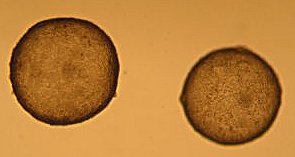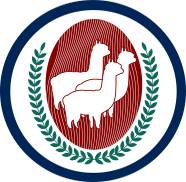ET Program
“BEAUTY LIES WITHIN” A HISTORY OF EMBRYO TRANSFER AT BANKSIA PARK
M.O.E.T. will allow us to supply alpaca breeders with a quality of animal which is not normally available to the market.
If a prospective purchaser were to take a glance at our herd of heavily pregnant alpacas they may well wonder what has happened to our breeding program over the past few years. There is no doubt it is the most “hotchpotch” group of female alpacas you are likely to see. There are alpacas with fused ears, banana ears, blue eyes, white faces, wry faces, undershot jaws, roach backs, crooked tails, no tails, fused toes and even extra toes. There are multi coloured huacaya, first cross suris and alpacas with fleece on them like steel wool.
With the introduction of embryo transfer and more recently multiple ovulation embryo transfer (MOET) in alpacas, these girls have become a valuable asset to our herd. They all have a few things in common and they all have a history of being excellent mothers who concieve and give birth easily. Each of them carries a precious embryo from the females in the top 10% of our herd.
These girls are a testament to the saying that “beauty lies within”. If we move into the next paddock with the offspring from the last few months, we see these same style of females with healthy vigorous cria at foot that look nothing like their recipient mothers but very much like each other.
In May 2007 Banksia Park was visited by Paul & Sally Taylor from Montana and Dr Alejandra von Baer from Chile.
Paul & Sally are world leaders in embryo transfer in alpacas and llamas and have been keen researchers along with Alejandra into the possible freezing of alpaca embryo. Their visit to Banksia Park allowed an opportunity for training and sharing of experiences.
Banksia Park is now well placed to continue to drive the advanced reproduction of alpacas to new levels. Thankyou to all who have contributed to this possibility.
WHAT IS EMBRYO TRANSFER?
Embryo transfer entails the natural mating of a donor female. A week later, the donor is sedated and flushed non-surgically using a catheter inserted through the cervix into the uterus. If an embryo is retrieved it is transferred into a sedated recipient by means of a pipette through the cervix into the uterus.
WHAT IS MOET?
MOET (multiple ovulation and embryo tranfer) or superovulation involves the same collection and transfer proceedure but includes the use of various drugs to enhance the number of follicles ovulating at the same time. If multiple embryos are retrieved they are placed individually into a number of recipients.
WHAT IS MOET?
MOET (multiple ovulation and embryo tranfer) or superovulation involves the same collection and transfer proceedure but includes the use of various drugs to enhance the number of follicles ovulating at the same time. If multiple embryos are retrieved they are placed individually into a number of recipients.

FULL STEAM AHEAD
We flushed 30 females in our first program. We remated these females a few days later and flushed them again a week later. Jane left her mobile lab over here and flew back to Victoria. She flew back repeatedly over the next few months to flush our females until all our spare recipients were full.
“SECRET WA BUSINESS”
Jane had talked about the progress she and David Hopkins were making with their research into super-ovulation. We felt that if we could condense the flushings into a shorter time frame it would be much easier to manage on many levels. We offered to put some females on a superovulation program as soon as we had some more recipients available. We also set out to acquire some more recipints. We found a few breeders prepared to sell “potential ovens” at a suitable price. We also traded some stud services to our males in exchange for recipients. This would be the first commercial attempt at MOET in alpacas in the world.
Our first attempts produced a wide variation in results. Some females responded poorly and others had a hyper-response. Some fine tuning of the drug protocol has allowed a more consistent performance in subsequent programs.
INITIAL RESULTS
Our top group of females produced over 100 embryos from their first three programs. We average approximately three embryos per female per flush. Of all embryos implanted into recipients from the MOET program more than 60% have been scanned 60 days pregnant. The success of the MOET program at Banksia Park has prompted some other alpaca breeders to become involved.

DISADVANTAGES
The program has its disadvantages. Preparation for MOET is complicated, intense and time consuming. It is hard work for a few weeks. With 20 donor females in a MOET program there are 80 recipints that also need to be prepared. This number of alpacas in the program can mean many injections over three weeks. Stress levels for alpacas (and handlers) needs to be kept to a minimum. The alpacas can become reluctant to come into the handling area if every time they come in they get a needle so we have overcome this by keeping the barn heavily stocked with lucerne hay in hay racks. The girls wait at the gate to be let in. Handlers need to be confident giving intramuscular injections. If you are not at the beginning you will be by the end! It is vital that all alpacas are in excellent health. All alpacas need to be on a rising plane of nutrition, including 14% crude protein in the ration. Lactation does not appear to affect the success rates provided they are in good body condition.

ADVANTAGES
To make maximum gains in any livestock industry it is important to be able to select the best genetics from a large base. Improvements on large farms in Peru come from the ability to heavily cull the lower quality of alpacas in the herd. I recall a stud I visited in Peru sent 6,000 alpacas a year to the slaughterhouse out of a herd of over 40,000. We are not in a position to cull over 10% of our herds in this way. Embryo transfer enables us to maximize our genetic gain by allowing the lower portion of our herd to carry our top females embryos. This ensures even faster genetic gain than the traditiional process of culling. It is effectively culling the lower quality of animals out of the breeding program but continues to have the greater number of quality animals born from which to select the next generation.
Under a normal breeding program a female alpaca may give you approximately 10 offspring within her breeding life. The best of these may be the first offspring or the last born 10 years later. Super-ovulation of this female may allow you to have access to 10 of her offspring within the same year and to compare results of matings to different males in a condensed period. This benchmarking of available stud males is a powerful tool.
We currently have some females with more than 20 offspring due within the year. We aim to use MOET within our herd 4-5 times a year.
MOET has given our herd a boost in many areas. It has provided the ability to access the genetic potential of superb females within a very short space of time and the resultant positive use for females with known genetic faults, or whose fibre or conformation is not desirable, as recipients. MOET will allow us to supply alpaca breeders with a quality of animals which is not normally available to the market while simultaneously allowing us to make rapid improvements within our own herd.
We have just given birth to offspring from some of our first ET females, some of these will be natural matings but we also have offspring using ET females as donors, so we have achieved second generation ET offspring. A very exciting achievement for us and the Australian Alpaca Industry.
